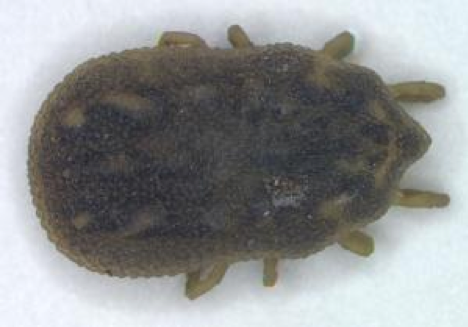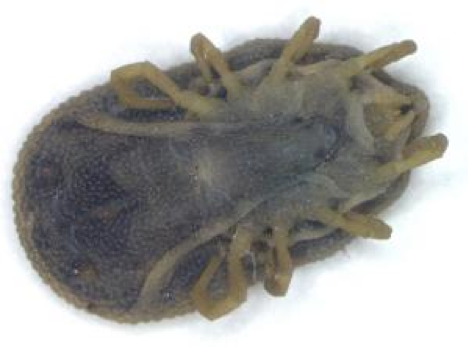
August 2018
Bat Ticks
By Drs. Ram Raghavan and Ken Harkin
Most people are familiar with the hard ticks that are reddish brown in color and have a typical teardrop shape. Hard ticks, such as the Lone star tick, American dog tick, and the Gulf coast tick can be found in grassland or vegetation along forest edges during the tick season. No matter the location, they are always searching for a host to get a blood meal.
While the much less frequently encountered ‘soft-bodied’ ticks do not come out in the open, they are still widely prevalent in the United States. The Carios kelleyi, a type of soft-bodied tick, is one of many kinds of ticks associated with bats in North America.
These ticks are small, irregularly shaped, and light to dark brown in color. They reside in areas where bats typically roost. These ticks will occasionally bite humans and pet animals when their primary hosts, bats, are unavailable - such as after bat control in a residence. Older homes, rustic cabins, and barns are typically the sort of places where these ticks can be found.

|

|
|
Carios kelleyi viewed from top (left) and bottom (right) © Iowa State University |
|
The epidemiological significance and ecology of bat ticks are generally misunderstood in North America. In 2006, bats collected in Georgia were found to be naturally exposed to spotted fever group Rickettsia and relapsing tick fever Borrelia, but no evidence of these pathogens were found in C. kellyi that were found attached to these bats.1 However, in a 2005 Iowa study, the DNA of spotted fever group rickettsia and relapsing group Borrelia was isolated from C. kellyi.2 Separately, human blood was detected in C. kellyi,3 indicating that these ticks can and will feed on human hosts if given the opportunity.
Please contact KSVDL Client Care at clientcare@k-state.edu or 866-512-5650 with questions. If you need help identifying a tick species, use the KSVDL Tick Identification tool.
References:
1. Reeves, W.K., Streicker, D.G., Loftis, A.D. and Dasch, G.A., 2006. Serologic survey of Eptesicus fuscus from Georgia, USA for Rickettsia and Borrelia and laboratory transmission of a Rickettsia by bat ticks. Journal of Vector Ecology, 31(2), pp.386-389.
2. Loftis, A.D., Gill, J.S., Schriefer, M.E., Levin, M.L., Eremeeva, M.E., Gilchrist, M.R. and Dasch, G.A., 2005. Detection of Rickettsia, Borrelia, and Bartonella in Carios kelleyi (Acari: Argasidae). Journal of medical entomology, 42(3), pp.473-480.
3. Gill, J.S., Rowley, W.A., Bush, P.J., Viner, J.P. and Gilchrist, M.J.R., 2004. Detection of human blood in the bat tick Carios (Ornithodoros) kelleyi (Acari: Argasidae) in Iowa. Journal of medical entomology, 41(6), pp.1179-1181
If you have questions, please contact KSVDL Client Care at 866-512-5650 or clientcare@vet.k-state.edu
Next: Staining Cytology Samples Prior to Submission to KSVDL
Return to Index